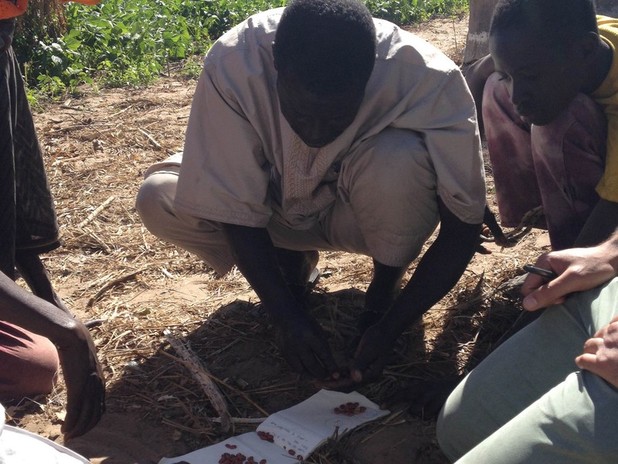February 06, 2014
Senior Editor Aaron Britt heads out for his first ever field visit with an IDEO.org project team. Partnering with the Rockefeller Foundation, this team is talking with farmers and stakeholders in Senegal to better understand the root causes and opportunities to reduce post-harvest food waste.





I joined up with the Rockefeller team late last week for my first trip to the field as an IDEO.org employee. Leaving aside the exhausting flights from San Francisco to Dakar, the jetlag, and the general lack of sleep, I was totally ecstatic to have arrived in Senegal.
My colleagues—Stacy Barnes (Design Lead), Shalu Umapathy and Rafael Smith (Global Fellows), and H.P. Mendoza (filmographer extraordinaire)—had set up a bunch of interviews with farmers to better understand post-harvest losses and I was along for the ride, helping to document what we heard, to better understand human-centered design, and to put my shoulder to the wheel for the squad we’d dubbed the Waste Watchers.
After spending the last ten years as a journalist, one who thrived on pre-interview preparation and lengthy email exchanges with sources, it was a surprising shift to suddenly be flying by the seat of my pants in rural Senegal catching as catch can.
We raced through a morning of interviews, some better than others, as I served as both note-taker and—by dusting-off my creaky, decade-old French—pas si mal translator. A missed afternoon connection left our schedule open so Stacy and Rafa elected to do a bit of run-and-gun interviewing by stopping to chat up a series of roadside fruit and vegetable vendors.
It certainly wasn’t the way that I was accustomed to working, and after a few busts I started to wonder just how effective this seemingly aimless brand of data gathering could actually be.
At a bend in the road in Sangalkam, Stacy hopped out of our dusty Mitsubishi Pajero with our translator Maimouna to query a group of women selling melons. Rafa and I milled about, bought a bunch of small, delicious bananas, and chomped away on a sack of the peanuts that grow in great abundance here. He then suggested that we cross the road to see what we might learn from a young man selling fruits and cigarettes from a cart. Neither of us speaks Wolof, and as I had quickly learned, the further you get from Dakar the less likely you are to hear French. I wholly expected to be rebuffed in a quick conversation of mongrel English, half-baked French, and impenetrable Wolof.
I kicked off by peppering the vendor with questions in en Francais, the minority of which I was able to make stick. We muddled through for a few minutes, learning little and communicating less, until a young man named Omar interceded. Not only did his French easily best mine, but it turned out that we’d struck gold. He worked for an agricultural federation whose local office was 100 yards that way, and whose cold-storage facility was just across the street. Suddenly an entire value chain lay at our feet and all we had to do was wander over to inspect it.
First up was the storage facility. We got a tour of the pitched green barn’s chiller, one of two massive chambers with two 747-grade fans 20 feet off the ground. We learned about how Omar ascertains the quality of the local mangos, for how long he stores, them, and about how long it takes to ship them to their European destinations so that they crest in ripeness as they hit the shelves in Brussels. Turns out that melons are much riper when picked, so they head straight to market, whereas mangos rely heavily on the cooling chambers lest they spoil straightaway.
Then Omar led us back across the road to the Federation’s main office to talk with the Secretary General. Installed on a plastic chair in the afternoon shade, the Secretary General described the political organization of the federation, the pests that blight his tomatoes, and inquired after what the team had learned from its eight days with Kenyan farmers.
All told, we stumbled into a ton of information about how regional farmers band together to grow, store, and export their crops, and are lining up a visit to the Secretary General’s farm.
For my part, this felt like extreme serendipity, but for Rafa, it was all part of the elasticity and guided-by-intuition glory of human-centered design. Chalk up my trepidation to being an HCD neophyte, or maybe to the fact that the bulk of my reporting has been oriented around a story whose general architecture I had a strong sense from the start.
Maybe the biggest take-away for me was another pearl of insight from Rafa: “This is why you can’t line up your interviews back-to-back-to-back. You got to leave yourself room to improvise.” A human-centered sentiment, indeed.

